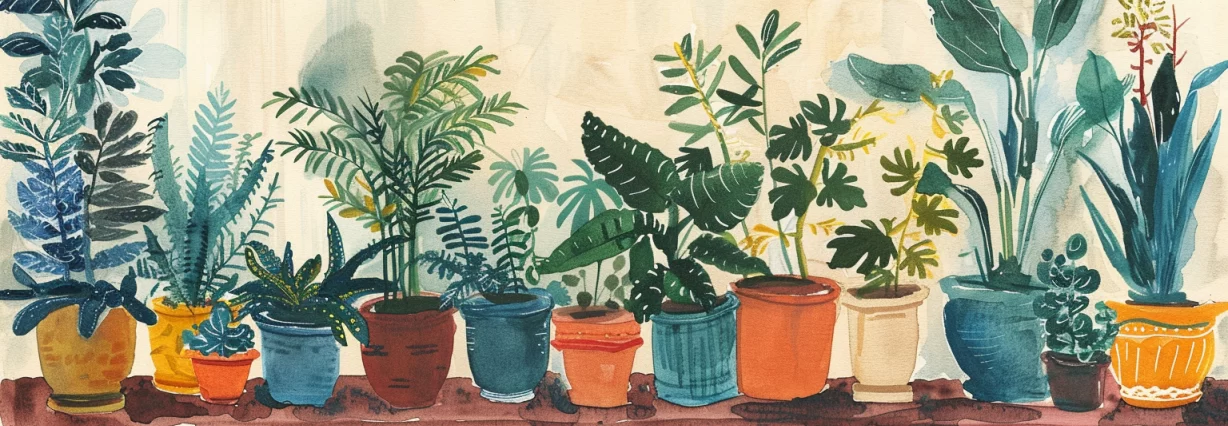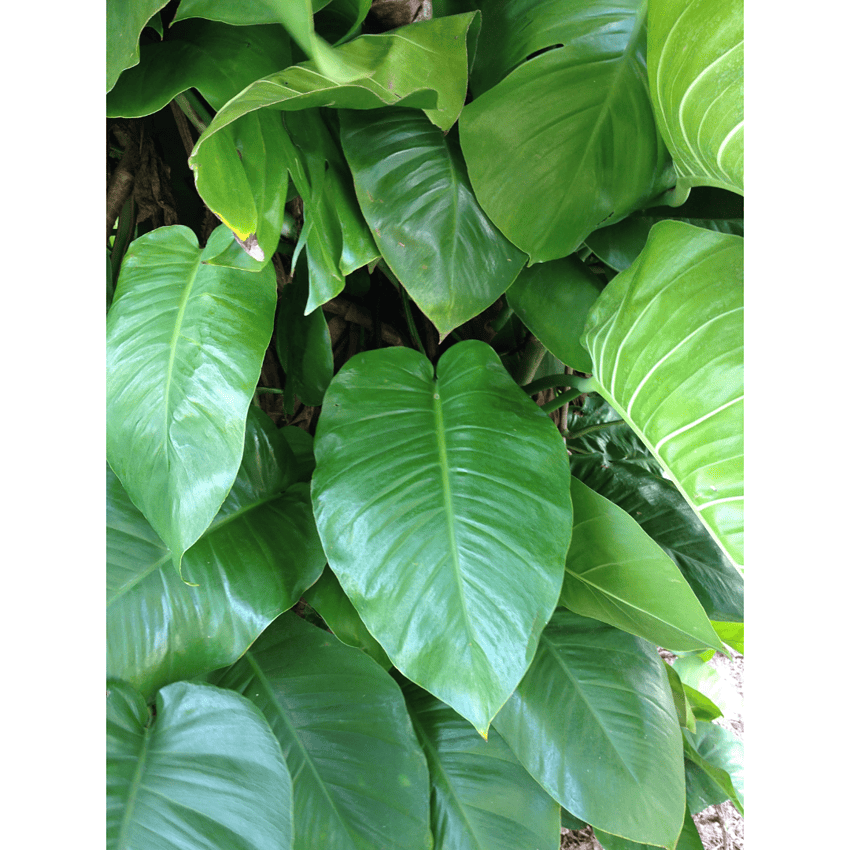Philodendron Giganteum is a stunning tropical plant that has become increasingly popular among indoor garden enthusiasts. This beautiful plant is known for its large, glossy green leaves that resemble an elephant’s ear. It is a creeping or climbing plant that, in nature, with the help of its aerial roots, adheres to the trees along which it grows.
If you are looking for a low-maintenance plant that can add a touch of tropical elegance to your home, Philodendron Giganteum is an excellent choice. This plant is relatively easy to care for, and it can thrive in a variety of conditions. Whether you are a seasoned plant parent or a beginner, you can enjoy the beauty of this plant without much hassle.
In this article, we will provide you with an overview of Philodendron Giganteum, its care, propagation, common problems, and growing tips. We will also answer some frequently asked questions about this plant. By the end of this article, you will have all the information you need to grow and care for your Philodendron Giganteum successfully.
Key Takeaways
- Philodendron Giganteum is a low-maintenance plant that can add a touch of tropical elegance to your home.
- This plant is relatively easy to care for, and it can thrive in a variety of conditions.
- By the end of this article, you will have all the information you need to grow and care for your Philodendron Giganteum successfully.
Overview
Philodendron Giganteum is a tropical plant that belongs to the Araceae family. This fast-growing plant is native to South America and the Caribbean and is commonly known as the Climbing Philodendron or Spider Plant. It is a popular houseplant due to its ease of care and striking foliage.
Description
The Philodendron Giganteum is a green plant with heart-shaped leaves that can grow up to 3 feet long and 2 feet wide. The leaves are glossy and can be either solid green or variegated. The plant has aerial roots that help it climb and attach to a trellis or other support structure.
Species
The Philodendron Giganteum is a member of the Araceae family, which includes more than 3,000 species of plants. This family is known for its large, showy foliage and is commonly found in tropical regions. This is one of the largest species in the Philodendron genus and can grow up to 10 feet tall in the wild.
This plant contains calcium oxalate crystals, which can cause skin irritation and swelling if ingested. It is important to keep this plant away from pets and children.
The USDA recommends growing Philodendron Giganteum in room temperatures between 55-80°F. It is a tropical plant and requires a humid environment to thrive. During the growing months, it is important to keep the soil moist but not waterlogged. In fall and winter, reduce watering to prevent over-saturation.
In conclusion, Philodendron Giganteum is a beautiful and easy-to-care-for plant that can add a tropical touch to any home. With the right conditions and care, this plant can grow to be a stunning addition to your collection.
Care
Proper care is essential for the health and growth of your Philodendron Giganteum. Here are some tips to help you provide the best possible care for your plant.
Watering
Philodendron Giganteum prefers moist soil, but it is important not to overwater it. Water your plant when the top inch of soil feels dry to the touch. Make sure the pot has drainage holes to prevent water from accumulating at the bottom of the pot and causing root rot. Water your plant more frequently during the growing season, and reduce watering during the winter months when growth slows down.
Sunlight
Philodendron Giganteum prefers bright, indirect light. Direct sunlight can burn the leaves, so placing the plant in a location that receives filtered light is important. If your plant is not getting enough light, the leaves may become pale and the growth may slow down.
Temperature
Philodendron Giganteum prefers temperatures between 65°F and 80°F (18°C to 27°C). Avoid exposing the plant to temperatures below 55°F (13°C), as this can damage the leaves.
Humidity
Philodendron Giganteum prefers high humidity levels. You can increase humidity by misting the leaves regularly, placing a humidifier near the plant, or placing a tray of water near the plant. Make sure the pot is not sitting in water, as this can cause root rot.
Soil and Potting
Philodendron Giganteum prefers well-draining soil that is rich in organic matter. Use a quick-draining soil mix that contains perlite, sphagnum peat moss, and organic matter such as bark or leaf mulch. You can also add organic fertilizer or sterile compost to the soil to provide additional nutrients.
Air Purification
Philodendron Giganteum is a great air purifier and can help remove toxins from the air. Place the plant in a room where you spend a lot of time to help improve air quality.
Proper care is essential for the health and growth of your Philodendron Giganteum. By following these tips, you can help ensure that your plant thrives and remains healthy.
Propagation
Philodendron giganteum is a beautiful and popular houseplant that can be propagated through stem cuttings or division. Propagation is a great way to create new plants and expand your collection. This section will discuss the two most common methods of propagating this plant
Stem Cutting
Stem cutting is a simple and effective way to propagate Philodendron giganteum. Here are the steps to follow:
- Select a healthy stem with at least two leaves attached.
- Using a clean, sharp pair of scissors or pruning shears, make a clean cut just below a node – the point where a leaf is attached to the stem.
- Remove the bottom leaf or two to expose the node.
- Dip the cut end of the stem in rooting hormone to encourage root growth.
- Plant the stem cutting in a pot filled with well-draining soil.
- Water the cutting thoroughly and place it in a warm, humid location with bright, indirect light.
- Keep the soil moist but not waterlogged, and mist the cutting regularly to maintain humidity.
- After a few weeks, roots should start to form, and new growth will appear.
Propagation through stem cutting is an excellent way to create new plants that are genetically identical to the parent plant. It is also a great way to produce more plants quickly and easily.
In the next section, we will discuss the care and maintenance of Philodendron giganteum to ensure your new plants thrive.
Common Problems
Philodendron Giganteum is a relatively low-maintenance plant, but like any other plant, it can face some problems. Here are some of the common problems that you may encounter while growing Philodendron Giganteum.
Pests
Philodendron Giganteum is susceptible to pests like spider mites, mealybugs, and scale insects. Spider mites are tiny arachnids that can cause webbing on the plant’s leaves and suck the sap from the leaves. Mealybugs are small, white, and fluffy insects that can cause yellowing of leaves. Scale insects are small, brown, and oval-shaped insects that can cause leaf drop.
To get rid of these pests, you can use insecticidal soap or neem oil. You can also use a mixture of water and dish soap to get rid of spider mites. Make sure to spray the solution on the underside of the leaves where the pests are usually found.
Diseases
Philodendron Giganteum is susceptible to root rot, which is caused by overwatering. Root rot can cause the leaves to droop and turn yellow. To prevent root rot, make sure to water the plant only when the top 1-2 inches of soil is dry. Also, make sure the pot has proper drainage.
Another disease that Philodendron Giganteum can face is bacterial leaf spot. This disease is caused by the bacteria Xanthomonas campestris. It can cause small, water-soaked spots on the leaves, which can turn brown and cause the leaves to drop. To prevent bacterial leaf spot, make sure to avoid getting water on the leaves while watering the plant.
Toxicity
Philodendron Giganteum is toxic to pets and humans if ingested. The plant contains calcium oxalate crystals, which can cause irritation and swelling of the mouth, tongue, and throat. In severe cases, it can cause difficulty breathing. Make sure to keep the plant out of reach of children and pets.
In conclusion, Philodendron Giganteum is a beautiful and easy-to-grow plant, but it can face some problems. By following the tips mentioned above, you can keep your plant healthy and thriving.
Growing Tips
Growing Philodendron Giganteum is relatively easy, and with the right care, it can thrive and produce beautiful, lush foliage. Here are some tips to help you grow and care for your Philodendron Giganteum.
Container and Potting Mix
When it comes to container and potting mix, it is essential to choose the right size and type for your Philodendron Giganteum. As a large plant, it requires a spacious container that can accommodate its size and allow it to grow freely. A pot with a diameter of at least 16 inches is recommended.
In terms of potting mix, a well-draining mixture that retains moisture is ideal. You can use a mix of peat moss, perlite, and vermiculite, or you can purchase a pre-made potting mix suitable for indoor plants. Avoid using heavy soils as they can retain too much moisture and cause root rot.
Light Levels
Philodendron Giganteum prefers bright, indirect light. Direct sunlight can scorch its leaves and cause them to turn brown. However, if you place your plant in a low-light area, it may not grow as well and may produce smaller leaves.
To ensure your Philodendron Giganteum receives the right amount of light, place it near a window that receives bright, indirect light. If your home doesn’t have enough natural light, you can use grow lights to supplement it.
Watering
Philodendron Giganteum requires regular watering to keep its soil moist but not waterlogged. Overwatering can lead to root rot, while underwatering can cause its leaves to wilt and turn brown.
To water your Philodendron Giganteum, wait until the top inch of soil is dry before watering it thoroughly. Allow any excess water to drain out of the pot’s drainage holes to prevent waterlogging.
Fertilizing
Philodendron Giganteum benefits from regular fertilization during the growing season. You can use a balanced, water-soluble fertilizer once a month or a slow-release fertilizer every three months.
Common Issues
If you notice brown leaves on your Philodendron Giganteum, it may be due to overwatering, underwatering, or too much direct sunlight. Adjust your watering schedule and move your plant to a spot with bright, indirect light to help it recover.
Overall, Philodendron Giganteum is an easy-to-care-for plant that can add a touch of tropical beauty to any home. With the right care, it can thrive and produce beautiful, lush foliage.
Frequently Asked Questions
What are the care requirements for Philodendron Giganteum?
Philodendron Giganteum is a tropical plant that requires moderate to bright indirect light. It grows well in well-draining soil that is rich in organic matter. The plant prefers high humidity, so it is recommended to mist the leaves regularly. Fertilize the plant every two weeks during the growing season with a balanced fertilizer.
How big does Philodendron Giganteum grow?
Philodendron Giganteum is known for its large size, and it can grow up to 10 feet tall. The leaves can grow up to 3 feet long and 2 feet wide. The plant grows slowly, but with proper care, it can reach its full potential.
What is the ideal temperature for Philodendron Giganteum?
Philodendron Giganteum is native to tropical climates and prefers temperatures between 55 and 80 degrees Fahrenheit. The plant does not tolerate cold temperatures well, so it is important to keep it in a warm environment.
How often should I water Philodendron Giganteum?
Water Philodendron Giganteum when the top inch of soil feels dry. The plant prefers to be kept moist but not waterlogged. Overwatering can lead to root rot, so it is important to ensure the soil has proper drainage.
What type of soil is best for Philodendron Giganteum?
Philodendron Giganteum prefers well-draining soil that is rich in organic matter. A mix of peat moss, perlite, and vermiculite is ideal. The soil should be slightly acidic with a pH between 5.5 and 6.5.
What are the common pests and diseases that affect Philodendron Giganteum?
Philodendron Giganteum is susceptible to pests such as spider mites, mealybugs, and scale insects. Regularly inspect the plant for any signs of infestation and treat with an insecticidal soap if necessary. The plant is also prone to fungal diseases such as leaf spot and root rot, which can be prevented by ensuring proper drainage and avoiding overwatering.


